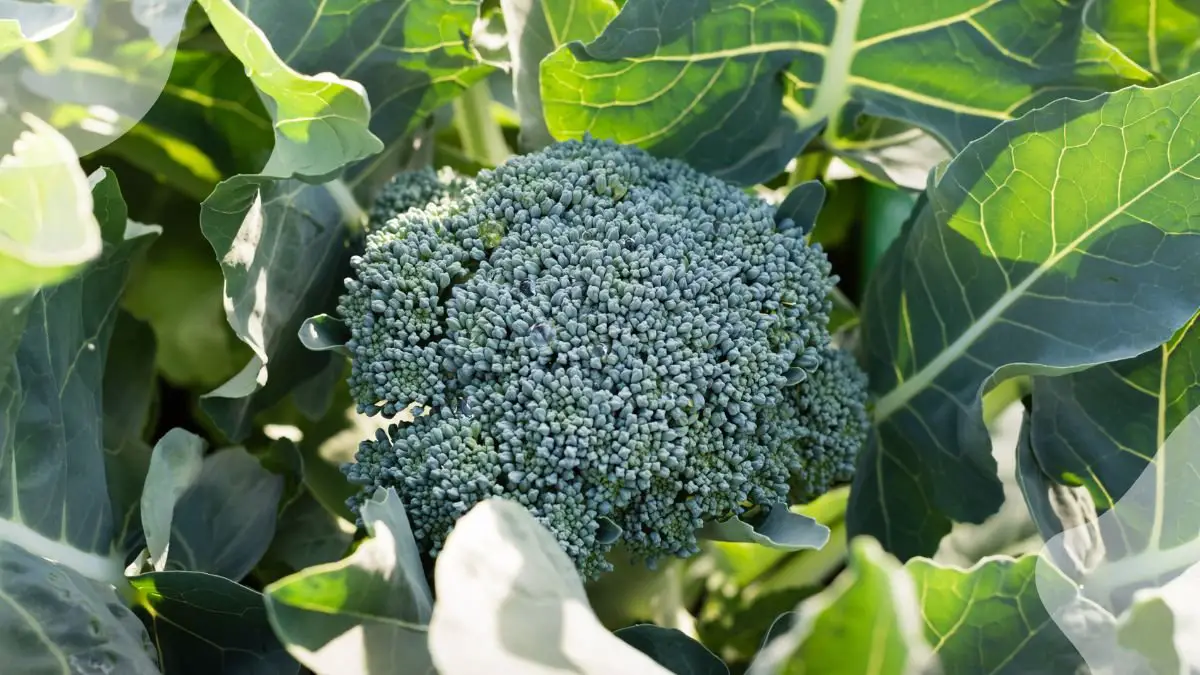Ready to learn how to plant broccoli plants like a pro? Whether you're a newbie gardener or a seasoned green thumb, mastering the art of growing broccoli is a game-changer. Say goodbye to store-bought produce and hello to fresh, homegrown goodness. In this guide, we'll dive into the nitty-gritty of planting broccoli, from seed to harvest.
Get ready to discover the secrets of successful broccoli cultivation, from choosing the right soil to providing optimal growing conditions. We'll walk you through each step, ensuring you have all the tools and knowledge needed for a bountiful broccoli harvest. Let's turn your garden into a broccoli paradise!
Key Takeaways
- Plant broccoli in early spring or late summer for best results.
- Inspect broccoli plants for sturdy stems, dark green leaves, and no signs of pests or diseases before purchasing.
- Ensure well-draining soil rich in organic matter for optimal broccoli growth.
- Plant broccoli seedlings 18-24 inches apart in rows with at least 30 inches between each row.
- Regularly water, mulch, and fertilize broccoli plants to promote healthy growth.
- Use natural remedies like neem oil or companion planting to prevent and manage common pests and diseases.
Choosing the Right Time to Plant
Seasonal Guidelines
Broccoli plants thrive when planted in early spring for a summer harvest or late summer for a fall harvest. The cool-season nature of broccoli demands strategic timing for optimal growth. It is essential to align the planting time with temperature ranges between 45°F and 75°F.
Temperature Considerations
To ensure successful growth, broccoli plants require at least 6 hours of sunlight daily. Maintaining temperatures between 45°F and 75°F is crucial for their development. Be cautious of temperature fluctuations that could impact the plants' health and yield.
Frost Factors
Protecting broccoli plants from frost damage is vital during colder seasons. Monitoring weather forecasts can help prevent any frost-related issues that may arise. Implementing frost protection measures, such as covering the plants, becomes necessary in such situations.
Selecting Healthy Broccoli Plants
Plant Quality
When selecting broccoli plants, choose those with vibrant green leaves as they indicate good health. Check for any signs of disease or pest damage like spots or holes on the leaves. It's crucial to prioritize quality over quantity to ensure successful growth.
Size Matters
To promote healthy growth, space broccoli plants adequately based on their mature size. Consider the spacing requirements to prevent overcrowding, which can hinder development. Optimizing plant size is essential for both maximum yield and overall plant health.
Disease Resistance
Opt for reliable broccoli varieties that are known for their disease resistance properties. By choosing disease-resistant plants, you can minimize the risk of infections and ensure better growth outcomes. Implement preventive measures and regularly monitor your plants for any signs of disease development.
Understanding Soil Needs
Soil Health
To improve soil quality for broccoli plants, incorporate organic matter such as compost to enhance drainage and fertility. Maintaining a slightly acidic pH between 6.0 and 7.0 is crucial for optimal growth. By enhancing soil health, you provide the necessary foundation for robust broccoli development.
Nutrient Requirements
Broccoli plants thrive on a balanced fertilizer rich in nitrogen to promote leafy growth. Ensuring a steady supply of nutrients throughout the growing season is essential for sustained plant vitality. By supporting broccoli plants with the right nutrients, you facilitate their optimal development and overall health.
pH Levels
Regularly check soil pH levels to guarantee they fall within the ideal range of 6.0 to 7.0 for broccoli cultivation. If necessary, adjust soil acidity to meet the specific requirements of broccoli plants. Monitoring pH levels consistently is key to maintaining a balanced soil environment conducive to healthy plant growth.
Planting Your Broccoli
Seed vs Seedling
When planting broccoli, gardeners face the choice between broccoli seeds and broccoli plants. Consider factors like time, convenience, and growth speed when deciding. Evaluate the benefits of each for successful planting.
- Seeds offer cost-effectiveness and a wider variety selection.
- Seedlings provide a head start in the growing process.
Planting Depth
Dig holes slightly larger than the root ball for proper planting depth. Ensure plants are planted at the same depth as in the container to promote healthy root development. Avoid planting too shallow or too deep.
- Planting too shallow can lead to weak root systems.
- Planting too deep may hinder nutrient absorption.
Spacing Guidelines
Space broccoli plants 18 to 24 inches apart in rows 24 to 36 inches apart. Allow sufficient space for plant growth and air circulation. Follow recommended spacing guidelines for optimal development.
- Adequate spacing prevents competition for nutrients.
- Proper air circulation reduces the risk of diseases.
Caring for Your Broccoli Plants
Watering Wisely
To ensure optimal growth, keep the soil around your broccoli plants consistently moist but not waterlogged. Deeply water them at least once a week, adjusting this frequency based on the prevailing weather conditions. Regularly monitor the soil moisture levels to maintain proper hydration and prevent drying out.
Feeding Your Plants
Nourish your broccoli plants with a nitrogen-rich balanced fertilizer to promote healthy development. Throughout the growing season, consider side-dressing the plants with compost or additional nitrogen fertilizer to provide ongoing nutrients. This practice supports robust growth and enhances the overall health of the plants.
Mulching Benefits
Mulching around your broccoli plants offers various advantages, such as retaining soil moisture and suppressing weed growth. By maintaining an even soil temperature, mulching contributes to the optimal growth of your plants. Embrace mulch as a valuable tool in enhancing the health and vitality of your broccoli plants.
Protecting Plants from Pests and Diseases
Pest Management
Gardeners should actively monitor broccoli plants for common pests such as aphids and cabbage worms. Implementing pest control measures promptly is crucial to prevent infestations that can harm the plants. Utilize natural remedies or pesticides to effectively manage pest populations.
- Regularly monitor broccoli plants for aphids and cabbage worms
- Implement pest control measures promptly
- Use natural remedies or pesticides for effective pest management
Disease Prevention
To prevent diseases like clubroot and downy mildew, gardeners should practice crop rotation regularly. Removing plant debris on a consistent basis helps minimize the risks of diseases affecting the plants. By implementing preventive strategies consistently, gardeners can maintain plant health and prevent diseases effectively.
- Practice crop rotation to prevent clubroot and downy mildew
- Remove plant debris regularly to minimize disease risks
- Implement preventive strategies to maintain plant health
Harvesting Broccoli
When to Harvest
Harvest broccoli heads when firm and tight before florets separate. Time harvesting based on head maturity and firmness. Opt for timely harvesting to enjoy the best flavor and texture.
Harvesting Techniques
Cut main broccoli heads at an angle, leaving some stem for side shoots. Use sharp tools for clean cuts to encourage regrowth. Harvest broccoli efficiently to maximize yields and plant longevity.
Common Problems and Solutions
Troubleshooting Tips
Yellowing leaves are a common issue when growing broccoli plants. Identify this problem early to prevent further damage. Regularly check your plants for signs of stress or nutrient deficiencies. Monitor their health closely.
Implement corrective actions promptly to support the growth of your broccoli plants. Address any issues detected immediately. By taking proactive measures, you can ensure healthy plant development.
Corrective Actions
Adjust your watering schedule and amount based on the specific needs of your broccoli plants. Overwatering or underwatering can lead to problems. Ensure the soil moisture level is optimal for plant growth.
Nutrient deficiencies can hinder the development of broccoli plants. Use appropriate fertilizers to address any lacking nutrients. This will promote healthy growth and prevent further issues.
To promote healthy broccoli growth, take proactive steps to correct any problems that arise. By staying vigilant and addressing issues promptly, you can enjoy a thriving broccoli garden.
Summary
You now have a comprehensive guide on how to plant and care for broccoli successfully. By choosing the right time, selecting healthy plants, understanding soil needs, planting correctly, and providing proper care while protecting your plants, you are well on your way to a bountiful harvest. Remember to watch out for common problems and use the solutions provided to ensure your broccoli thrives.
Incorporate these steps into your gardening routine, and soon you will enjoy fresh, homegrown broccoli on your table. Happy planting!
Frequently Asked Questions
When is the best time to plant broccoli?
The best time to plant broccoli is in early spring or late summer for a fall harvest. Broccoli thrives in cooler temperatures between 45°F and 75°F, ensuring optimal growth and development.
How do I select healthy broccoli plants?
Choose broccoli plants with sturdy stems, dark green leaves, and no signs of yellowing or wilting. Look for compact, well-formed heads and avoid plants with spots, holes, or any signs of pests.
What kind of soil does broccoli need?
Broccoli prefers well-draining soil rich in organic matter. Aim for a slightly acidic soil pH between 6.0 and 7.0. Adding compost before planting can improve soil structure and provide essential nutrients for healthy broccoli growth.
How should I plant my broccoli seedlings?
Plant broccoli seedlings about 18-24 inches apart in rows spaced 24-36 inches apart. Ensure the roots are well-covered but the crown is above the soil level. Water deeply after planting to help establish the roots.
How can I protect my broccoli plants from pests and diseases?
To protect your broccoli plants, use row covers to prevent pests like caterpillars and aphids. Apply organic insecticides if needed and practice crop rotation to reduce disease risks. Keep the garden clean and remove any diseased plant debris promptly.
Image Source: Paid image from CANVA



